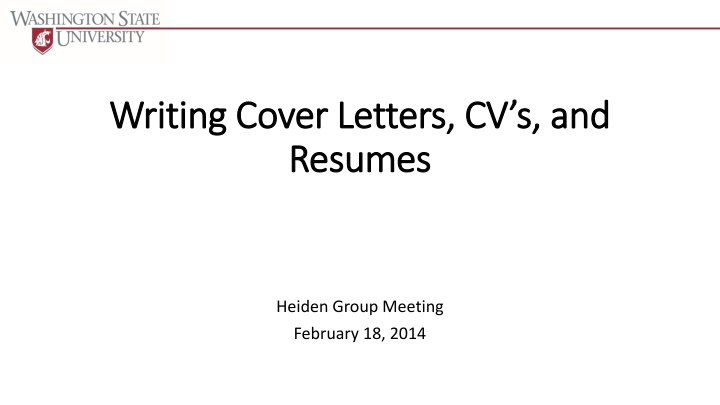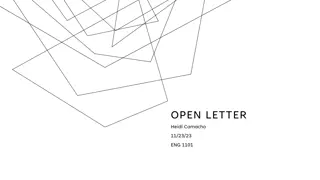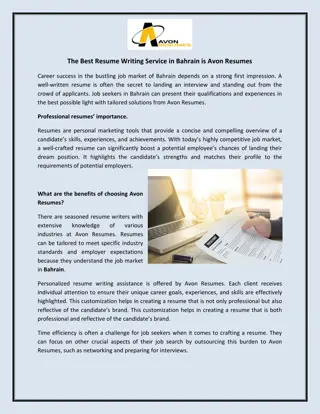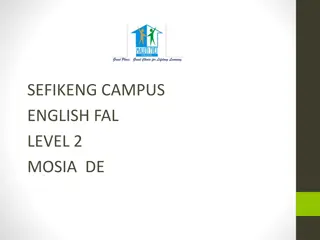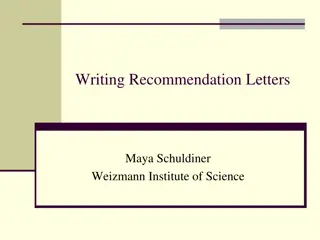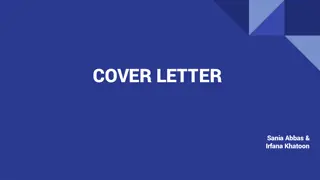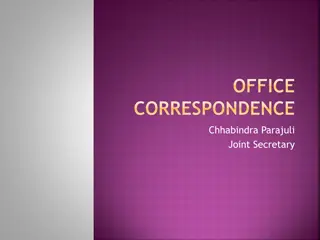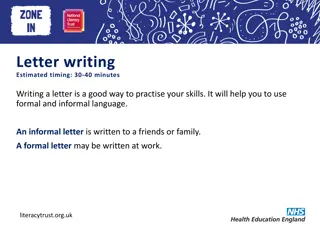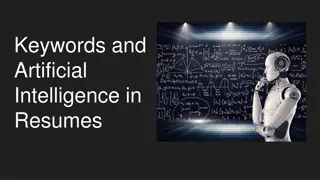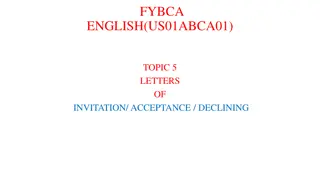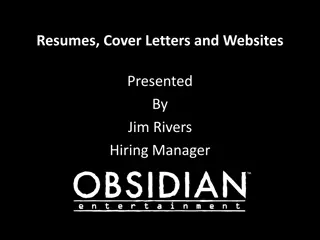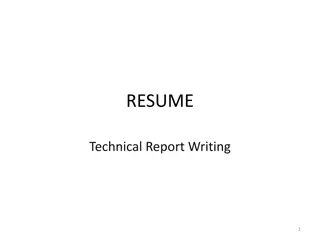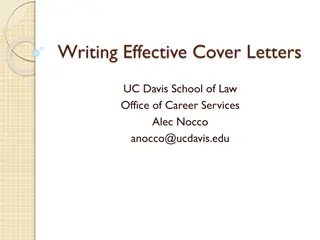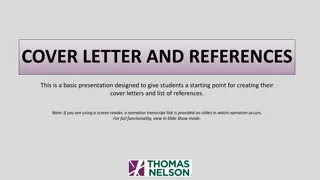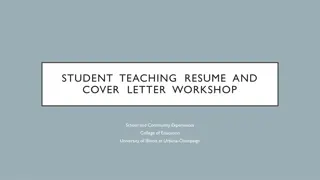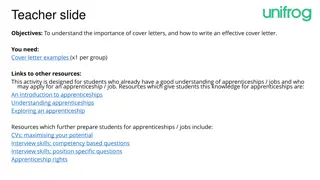Comprehensive Guide to Writing Cover Letters and Resumes
Crafting an effective cover letter and CV is crucial for job applications. This guide covers the components of a cover letter, dos and don'ts, and tips to make a strong impression on potential employers.
Download Presentation

Please find below an Image/Link to download the presentation.
The content on the website is provided AS IS for your information and personal use only. It may not be sold, licensed, or shared on other websites without obtaining consent from the author.If you encounter any issues during the download, it is possible that the publisher has removed the file from their server.
You are allowed to download the files provided on this website for personal or commercial use, subject to the condition that they are used lawfully. All files are the property of their respective owners.
The content on the website is provided AS IS for your information and personal use only. It may not be sold, licensed, or shared on other websites without obtaining consent from the author.
E N D
Presentation Transcript
Writing Cover Letters, CVs, and Writing Cover Letters, CV s, and Resumes Resumes Heiden Group Meeting February 18, 2014
Job Application Package Academics Cover Letter CV Research Proposals Teaching Statement Industry/Government Cover Letter Resume/CV 2
Cover/Application Letters Your first impression to the employer An opportunity to introduce yourself to the employer Provides detailed information on your qualification the job Explains the reasons for your interest in the specific organization Identifies your most relevant skills or experiences Sometimes will make or break you 3
Components of a Cover Letter Your Contact Information Name, Address, Phone Number, Email Address, Date Employer Contact Information (if you have it) Name, Title, Company Address Salutation Dear Mr./Ms. Last Name, (leave out if you don't have a contact or using Dear Hiring Manager or one of the other examples below) Body of Cover Letter The body of your cover letter lets the employer know what position you are applying for, why the employer should select you for an interview, and how you will follow-up. First Paragraph The first paragraph of your letter should include information on why you are writing. Mention the position you are applying for and where you found the job listing. Include the name of a mutual contact, if you have one. 4
Components of a Cover Letter (Contd) Middle Paragraph(s) The next section of your cover letter should describe what you have to offer the employer. Mention specifically how your qualifications match the job you are applying for. Remember, you are interpreting your resume, not repeating it. Final Paragraph Conclude your cover letter by thanking the employer for considering you for the position. Include information on how you will follow-up. Complimentary Close 5
Cover Letter Dos Personalize your letter. Address the specific position advertised. Get to the point. Write and edit your letter with great care. Half a page or 3/4th of a page long. 6
Cover Letter Don'ts Don't send a generic cover letter to many different companies. Don't make the reader work too hard to see that you are right for the position. Don't end your letter passively. 7
Resources About.com, Careers (http://jobsearch.about.com/) Cover Letter Tips (http://jobsearch.about.com/od/coverlettertips/tp/coverlettertips.htm) Sample Resumes and Cover Letters (http://jobsearch.about.com/od/sampleresumes/a/sampleresumes.htm) 9
CV vs. Resume CV Stands for curriculum vitae Contains everything! Used primarily in academics More detailed than resume Resume Often about one-two pages Consists of a summary of your professional and educational experiences 10
CV Content Contact Information (use a professional email address!!!) Summary of Qualifications (a place to fine tune CV to position applying to) Education Honors and Awards Thesis/Dissertation title (can be included in Education section) Research Experience Work Experience Teaching Experience Skills Publications/Presentations (can also be split up) Professional Memberships References 11
CV and Resume Writing Resources Purdue s Online Writing Lab (https://owl.english.purdue.edu/owl/resource/641/01/) Writer s Inc The Elements of Style Chronicle of Higher Education First Time on the Market? (http://chronicle.com/section/First-Time-on-the-Market-/146/) 12
Hints on Writing a CV Use 10 or 12 point font and easy to read fonts Use bigger fonts for name and section headings Be consistent on how arrange headings and information Use short statements Make sure to keep up to date Focus on results (use active voice Ordered pizza, compiled , etc.) Be specific on tasks included (ordered pizzas for Heiden group meeting taking into account vegetarian options) Mention results/accomplishments (were tasks completed?) Use only first or third person, but not both Don t write to read as a job description Stay within length requirements Contain keywords that pertain to job Don t emphasize irrelevant jobs 13
Common Problems with CVs and Resumes Spelling errors Lying (Do not add publications that are not yours) Disorganized information Being fancy (i.e. colored paper, highlighted words, Using a form letter (not tuning to position applying to) Assignment for end of month : Send Zach current CV version 14
